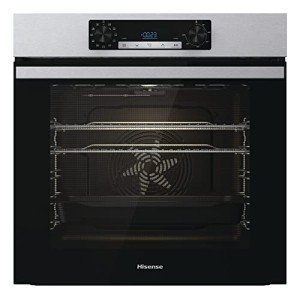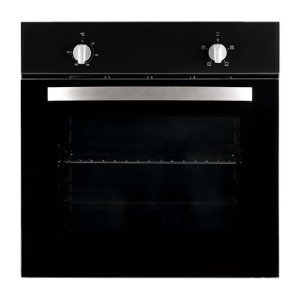The Comprehensive Guide to Single Ovens in the UK
Recently, the modern kitchen has actually experienced a renaissance, with homeowners putting a meticulous focus on cooking appliances that enhance both performance and visual appeal. Among the vital kitchen devices is the single oven, a staple for many British homes. This post looks into the numerous elements of single ovens in the UK, including their types, features, advantages, and factors to consider for potential buyers.

Comprehending Single Ovens
What is a Single Oven?
A single oven is a standalone or built-in cooking device created to bake, roast, grill, and sometimes steam food, using a vast array of culinary possibilities. As the name recommends, single ovens include one main compartment, separating them from double ovens, which offer 2 separate cooking areas.
Types of Single Ovens
Single ovens been available in numerous configurations and innovations. Below is a list of typical types discovered in UK kitchens:
Electric Single Ovens
- Uses electric coils or heating elements.
- Provides constant and efficient cooking.
- Often comes geared up with different functions like self-cleaning cycles.
Gas Single Ovens
- Uses gas flames to produce heat.
- Known for instantaneous heat and precise temperature control.
- Popular amongst chefs for their cooking performance.
Compact or Built-In Single Ovens
- Developed to suit pre-existing kitchen cabinets.
- Saves space while offering cooking flexibility.
- Offered in both electric and gas designs.
Convection Single Ovens
- Geared up with a fan that flows hot air.
- Promotes even cooking, decreasing cooking times.
- Generally allows for several rack positions for varied cooking.
Secret Features to Consider
When choosing a single oven, there are a number of features that customers should keep an eye out for. This can considerably impact the use and efficiency of the device in daily cooking. Significant features consist of:
- Capacity: The interior capacity can differ widely. Many single ovens offer in between 50 to 70 litres of cooking space, which is appropriate for family meals.
- Energy Efficiency: Look for A-rated models that save electrical power and decrease energy bills.
- Self-Cleaning Options: Some ovens use steam cleaning or pyrolitic cleaning, making maintenance easy.
- Programming Features: Programmable timers and settings can improve cooking precision, particularly for baking.
- Security Features: Some ovens come with kid locks, residual heat signs, and automated shut-off functions for enhanced security.
Advantages of Choosing a Single Oven
Single ovens offer many advantages, making them popular choices for kitchens of all sizes. Here are some crucial advantages:
Space Efficiency: The compact size of a single oven conserves kitchen area, which is especially helpful for houses and smaller sized homes.
Cost-Effectiveness: Typically, single ovens are more economical than double ovens in regards to initial purchase price and energy usage.
Simplicity of Use: With only one cooking compartment, single ovens are straightforward to operate, making them perfect for amateur cooks.
Flexibility: A single oven can handle a wide variety of cooking jobs-- from baking bread to roasting meats-- making it flexible enough for day-to-day cooking experiments.
Installation Considerations
When considering buying a single oven, there are necessary setup aspects to contemplate:
Size and Dimensions: Always inspect the space where the oven will be set up to ensure that it fits conveniently. The basic size for built-in designs is usually around 60cm wide.
Power Supply: Determine whether you need an hotpoint stainless steel electric Fan oven - buy now or gas oven based on existing kitchen components. An electrician may be needed for electric models.
Ventilation: Ensure appropriate ventilation, especially with gas ovens, to prevent the accumulation of harmful gases.
Popular Single Oven Brands in the UK
The market for single ovens is filled with a range of brand names, each offering unique features and dependability. The following table notes some of the most advised brands along with their standout functions.
| Brand name | Key Features | Price Range |
|---|---|---|
| Bosch | Reliable, effective, contemporary styles | ₤ 400 - ₤ 800 |
| Neff | Slide & & Hide door, instinctive controls | ₤ 600 - ₤ 1,200 |
| Beko | Budget-friendly options with good efficiency | ₤ 250 - ₤ 600 |
| John Lewis | Top quality, trendy designs | ₤ 500 - ₤ 1,000 |
| AEG | Advanced technology and energy performance | ₤ 600 - ₤ 1,500 |
FAQs
Q1: Can I change my double oven with a single oven?
Yes, you can change a double oven with a single oven, however make sure to validate the offered space and power supply compatibility.
Q2: How much does it cost to run a single oven?
The running costs of a single oven depend on its energy effectiveness score and how often it is utilized. Normally, an A-rated oven will be more affordable to run than lower-rated equivalents.
Q3: Are single ovens great for baking?
Definitely! Single ovens, specifically convection models, are well-suited for baking due to their evenly dispersed heat.
Q4: How long do single ovens typically last?
With proper maintenance, a single oven can last anywhere from 10 to 20 years. Regular cleaning and maintenance can extend its lifespan.

Q5: Do single ovens come with guarantees?
The majority of manufacturers offer a warranty ranging from one to five years, depending on the brand and model. It is a good idea to examine warranty choices before acquiring.
Single ovens play a crucial function in the contemporary UK kitchen, combining efficiency, flexibility, and space-saving advantages. With a range of types and features available, consumers can easily discover a single oven that satisfies their cooking needs and choices. By considering the crucial aspects highlighted in this post, property owners can make educated decisions, ensuring that their kitchen stays a hub for cooking imagination for years to come.
